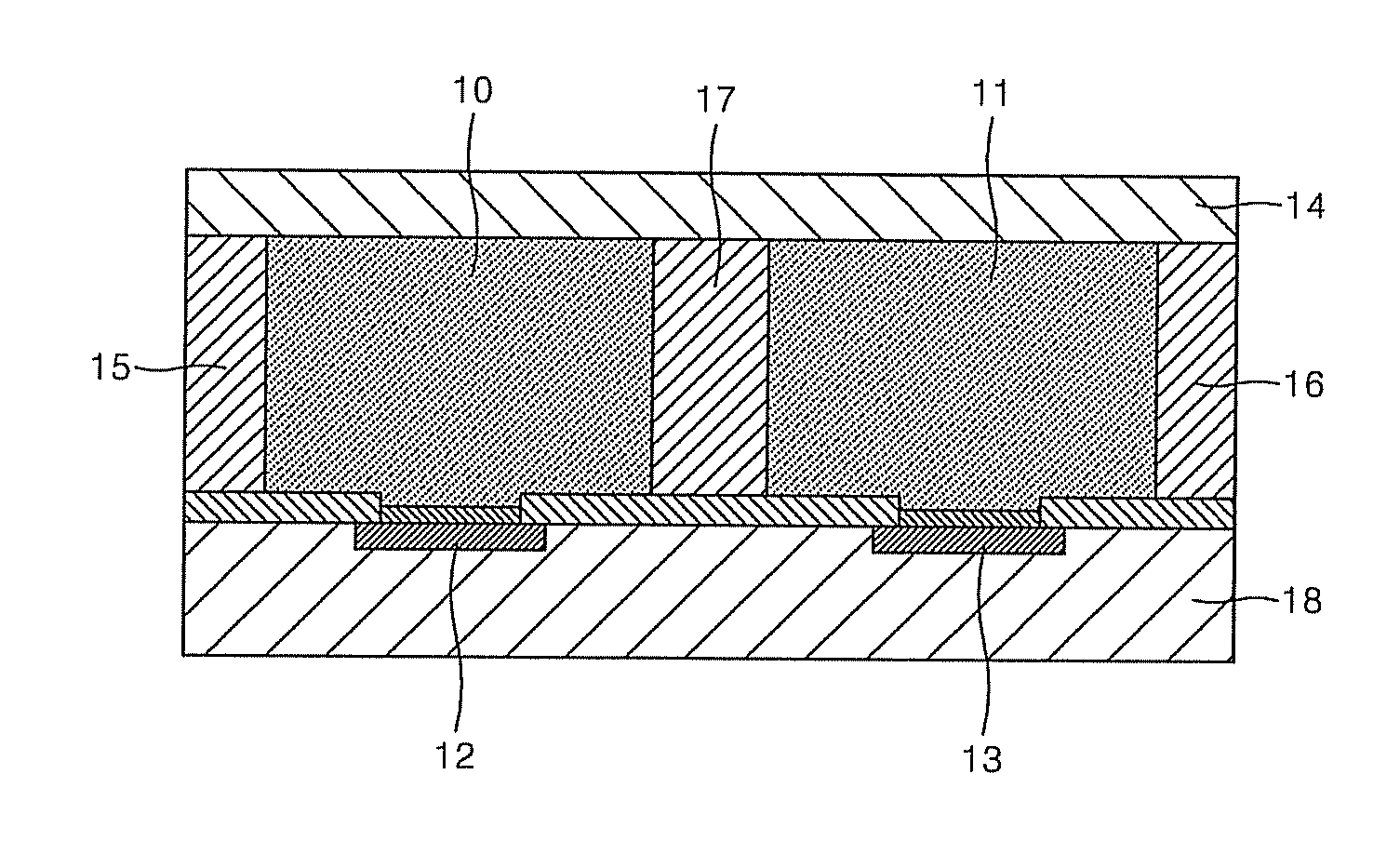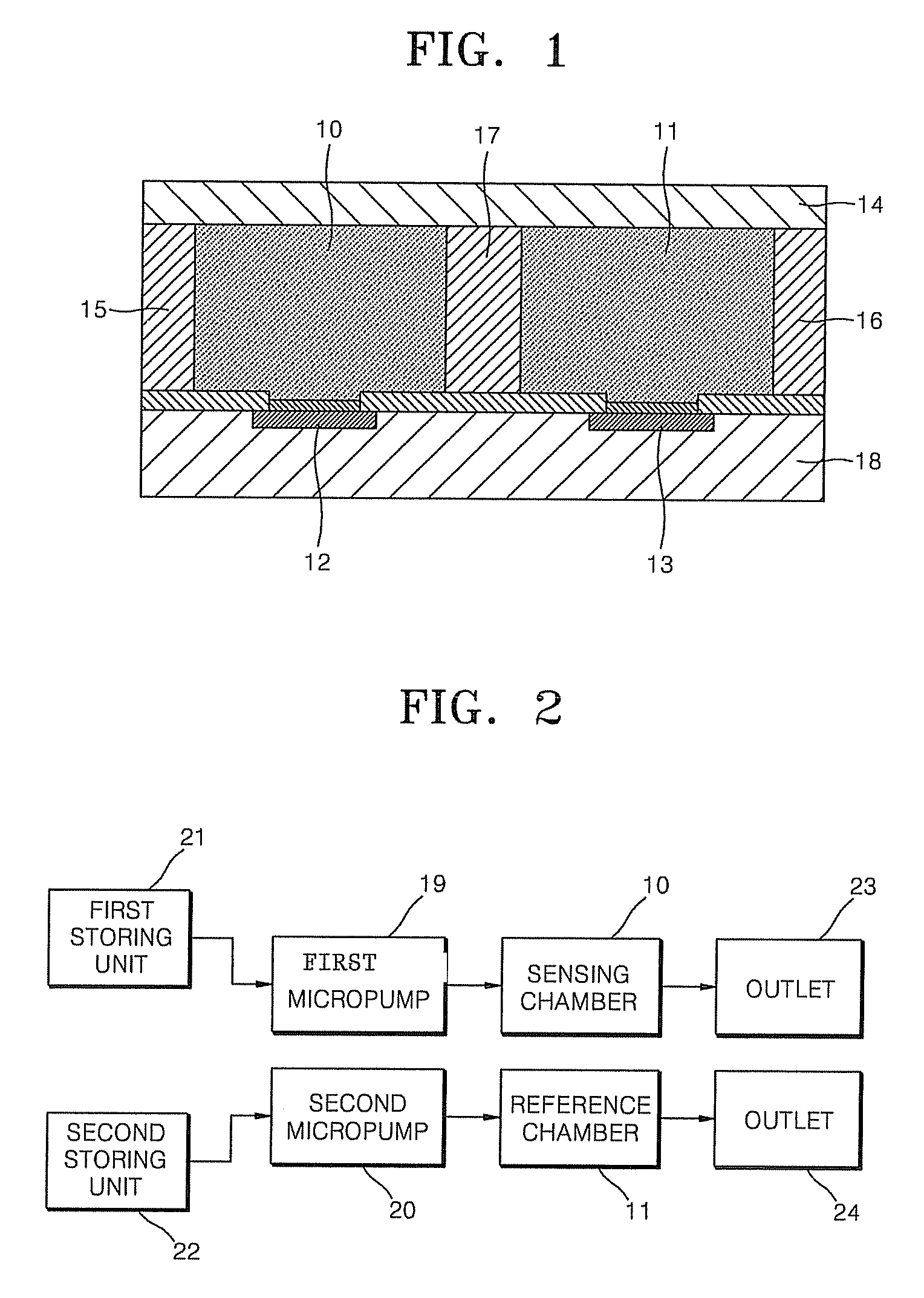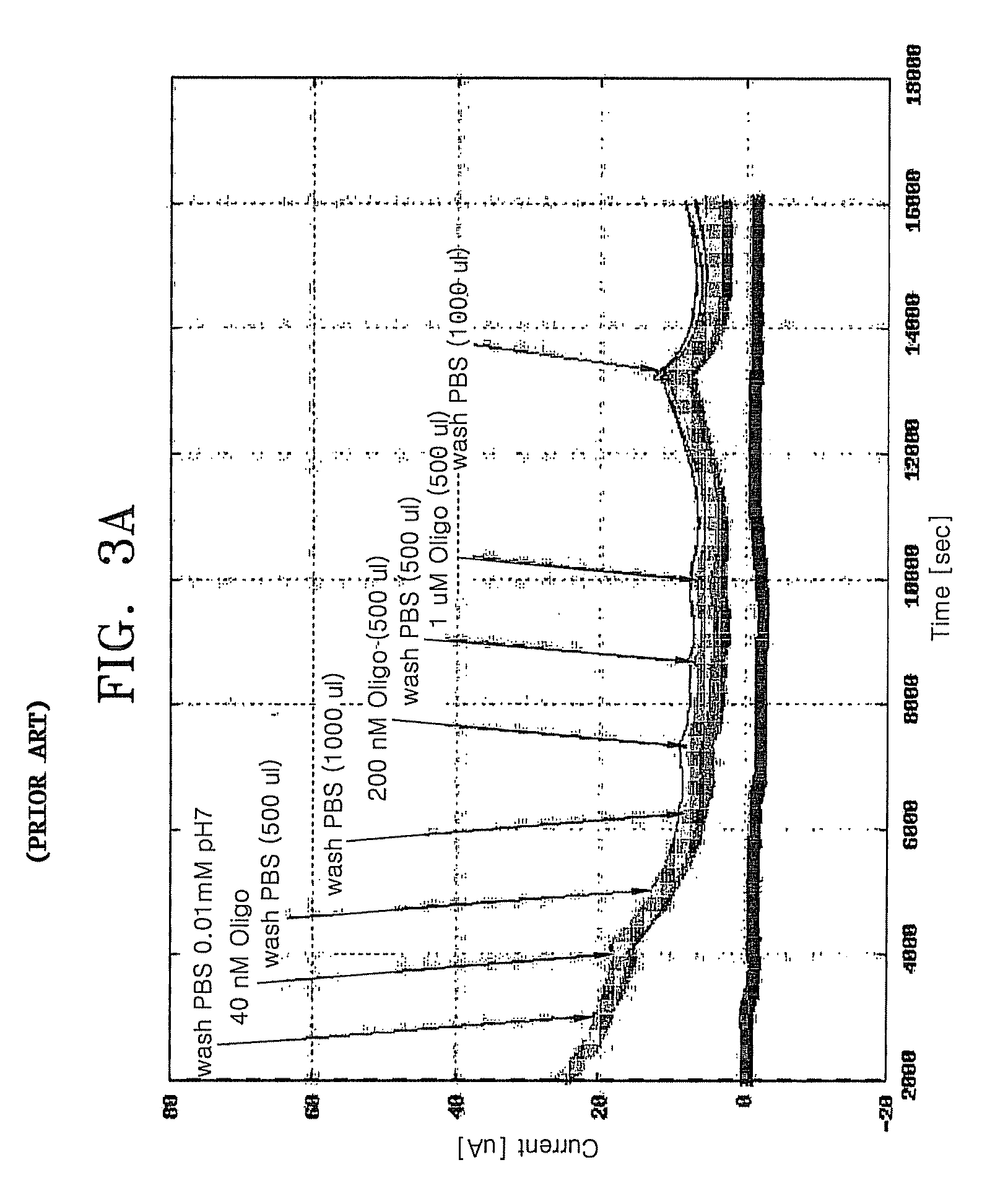FET-based sensor for detecting ionic material, ionic material detecting device using the FET-based sensor, and method of detecting ionic material using the FET-based sensor
a fet-based sensor and ionic material technology, applied in lighting and heating apparatus, drying machines with progressive movements, instruments, etc., can solve the problems of low sensitivity of biosensors, inability to separate signals derived from target biomolecules from noise, and inability to use signal correction, etc., to achieve low concentration of ionic materials and high sensitivity
- Summary
- Abstract
- Description
- Claims
- Application Information
AI Technical Summary
Benefits of technology
Problems solved by technology
Method used
Image
Examples
example 1
Manufacture of a FET-Based Sensor for Ionic Material Detection
[0078]A FET device was order-manufactured by X-FAB Semiconductor Foundries (Germany). The manufactured FET device included 192 FETs having the same structure and the same electrical characteristics in an array of 4×48. The FET device was manufactured using the equipment of X-FAB Semiconductor Foundries according to the company's own CMOS process. Although companies may have different standard CMOS processes, such differences are not a substantial factor affecting characteristics of the FET device. Therefore, the CMOS standard process of the company is not described herein.
[0079]A passivation layer and a gate electrode layer were removed from each of the FETs in an array to expose a polysilicon layer. Next, the exposed polysilicon layer on the surface of the FET was carefully washed with pure acetone and then with water and dried. The process of washing the substrate was performed using a wet station used in semiconductor ...
experimental example 1
DNA Detection Using a FET-Based Sensor for Ionic Material Detection Including a Single Chamber
[0085]A 0.01 millimolar mM phosphate buffer solution (“PBS”) (e.g., pH 7.0) and a solution containing 15-mer oligonucleotide (TGTTCTCTTGTCTTG) (SEQ. ID. NO. 1) were alternately flowed into and out of a chamber of the FET-based sensor manufactured in Experimental Example 1.
[0086]In particular, a 0.01 mM PBS solution, a 40 nanomolar (nM) oligonucleotide solution, 500 microliter (μl) of a 0.01 Mm PBS solution, 1000 μl of PBS, 500 μl of 200 nM oligonucleotide solution, 500 μl of PBS, and 500 μl of a 1 micromolar (μM) oligonucleotide solution, and 1000 μl of PBS were sequentially flowed into the chamber at 0.5 microliter per minute (μl / min) with an interval of several minutes to allow a previously injected solution to be completely flowed out of the chamber while a next solution was injected.
[0087]The level of a current in each of the 24 FETs, including 12 sensing FETs and 12 reference FETs, of ...
experimental example 2
[0091]DNA Detection Using a FET Based Sensor (First Experiment)
[0092]A 0.01 mM PBS buffer solution (pH 7.0) was flowed into and out of each of the sensing chamber and the reference chamber of the FET-based sensor manufactured in Example 1 under the same pressure through each chamber. Next, at a certain point of time, the PBS buffer solution was flowed into and out of the reference chamber while a solution containing 15-mer oligonucleotide (TGTTCTCTTGTCTTG) (SEQ. ID. NO. 1) was flowed into and out of the sensing chamber under the same pressure as the PBS buffer solution was flowed into and out of the reference chamber.
[0093]In particular, the PBS solution was injected three times into each of the sensing chamber and the reference chamber, and at a certain point of time, the PBS solution was flowed into the reference chamber while the 1 μM oilgonucleotide solution was flowed into the sensing chamber. Next, the PBS solution was flowed three times into each of the reference chamber and ...
PUM
| Property | Measurement | Unit |
|---|---|---|
| pH | aaaaa | aaaaa |
| currents | aaaaa | aaaaa |
| levels of currents | aaaaa | aaaaa |
Abstract
Description
Claims
Application Information
 Login to View More
Login to View More - R&D
- Intellectual Property
- Life Sciences
- Materials
- Tech Scout
- Unparalleled Data Quality
- Higher Quality Content
- 60% Fewer Hallucinations
Browse by: Latest US Patents, China's latest patents, Technical Efficacy Thesaurus, Application Domain, Technology Topic, Popular Technical Reports.
© 2025 PatSnap. All rights reserved.Legal|Privacy policy|Modern Slavery Act Transparency Statement|Sitemap|About US| Contact US: help@patsnap.com



